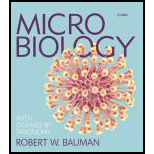
Concept explainers
(1)
To determine:
Name of the condition that alarms the doctors.
Case summary:
In the given scenario, Duyen visits her campus clinic with a two-week history of nausea, low-grade fever, fatigue, and mild pain in the upper right abdominal quadrant. The doctor observes Duyen’s eyes and skin and tells her that it’s not because of influenza.
(2)
To determine:
The disease that Duyen has.
Case summary:
In the given scenario, Duyen visits her campus clinic with a two-week history of nausea, low-grade fever, fatigue, and mild pain in the upper right abdominal quadrant. The doctor observes Duyen’s eyes and skin and tells her that it’s not because of influenza.
(3)
To determine:
How Duyen might have been infected.
Case summary:
In the given scenario, Duyen visits her campus clinic with a two-week history of nausea, low-grade fever, fatigue, and mild pain in the upper right abdominal quadrant. The doctor observes Duyen’s eyes and skin and tells her that it’s not because of influenza.
(4)
To determine:
The DNA virus that caused this disease.
Case summary:
In the given scenario, Duyen visits her campus clinic with a two-week history of nausea, low-grade fever, fatigue, and mild pain in the upper right abdominal quadrant. The doctor observes Duyen’s eyes and skin and tells her that it’s not because of influenza.
Trending nowThis is a popular solution!

Chapter 24 Solutions
Microbiology with Diseases by Taxonomy (5th Edition)
- Give examples of fat soluble and non-fat soluble hormonesarrow_forwardJust click view full document and register so you can see the whole document. how do i access this. following from the previous question; https://www.bartleby.com/questions-and-answers/hi-hi-with-this-unit-assessment-psy4406-tp4-report-assessment-material-case-stydu-ms-alecia-moore.-o/5e09906a-5101-4297-a8f7-49449b0bb5a7. on Google this image comes up and i have signed/ payed for the service and unable to access the full document. are you able to copy and past to this response. please see the screenshot from google page. unfortunality its not allowing me attch the image can you please show me the mathmetic calculation/ workout for the reult sectionarrow_forwardIn tabular form, differentiate between reversible and irreversible cell injury.arrow_forward
- 1.)What cross will result in half homozygous dominant offspring and half heterozygous offspring? 2.) What cross will result in all heterozygous offspring?arrow_forward1.Steroids like testosterone and estrogen are nonpolar and large (~18 carbons). Steroids diffuse through membranes without transporters. Compare and contrast the remaining substances and circle the three substances that can diffuse through a membrane the fastest, without a transporter. Put a square around the other substance that can also diffuse through a membrane (1000x slower but also without a transporter). Molecule Steroid H+ CO₂ Glucose (C6H12O6) H₂O Na+ N₂ Size (Small/Big) Big Nonpolar/Polar/ Nonpolar lonizedarrow_forwardwhat are the answer from the bookarrow_forward
- what is lung cancer why plants removes liquid water intead water vapoursarrow_forward*Example 2: Tracing the path of an autosomal dominant trait Trait: Neurofibromatosis Forms of the trait: The dominant form is neurofibromatosis, caused by the production of an abnormal form of the protein neurofibromin. Affected individuals show spots of abnormal skin pigmentation and non-cancerous tumors that can interfere with the nervous system and cause blindness. Some tumors can convert to a cancerous form. i The recessive form is a normal protein - in other words, no neurofibromatosis.moovi A typical pedigree for a family that carries neurofibromatosis is shown below. Note that carriers are not indicated with half-colored shapes in this chart. Use the letter "N" to indicate the dominant neurofibromatosis allele, and the letter "n" for the normal allele. Nn nn nn 2 nn Nn A 3 N-arrow_forwardI want to be a super nutrition guy what u guys like recommend mearrow_forward
- Health Safety And Nutrition F/Young ChildHealth & NutritionISBN:9781305144767Author:MAROTZPublisher:Cengage
 Medical Terminology for Health Professions, Spira...Health & NutritionISBN:9781305634350Author:Ann Ehrlich, Carol L. Schroeder, Laura Ehrlich, Katrina A. SchroederPublisher:Cengage LearningLifetime Physical Fitness & WellnessHealth & NutritionISBN:9781337677509Author:HOEGERPublisher:Cengage
Medical Terminology for Health Professions, Spira...Health & NutritionISBN:9781305634350Author:Ann Ehrlich, Carol L. Schroeder, Laura Ehrlich, Katrina A. SchroederPublisher:Cengage LearningLifetime Physical Fitness & WellnessHealth & NutritionISBN:9781337677509Author:HOEGERPublisher:Cengage





